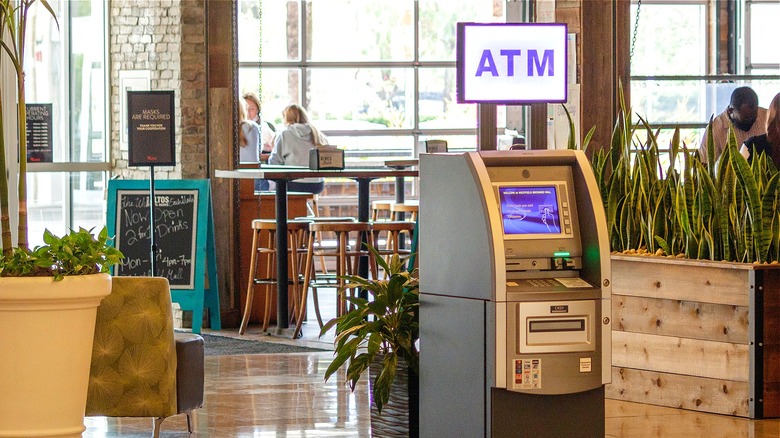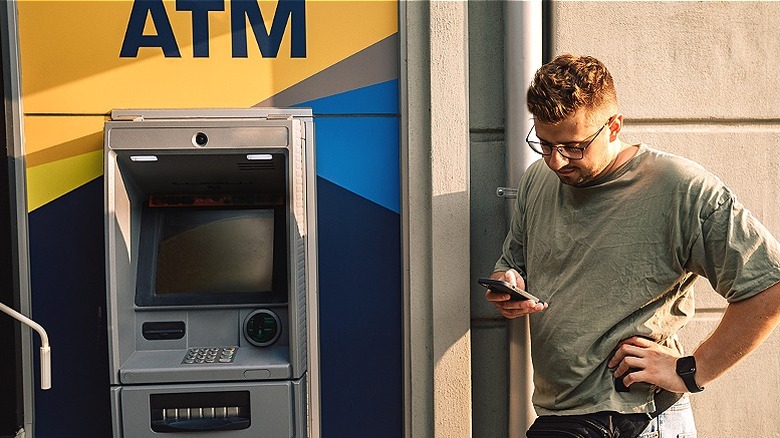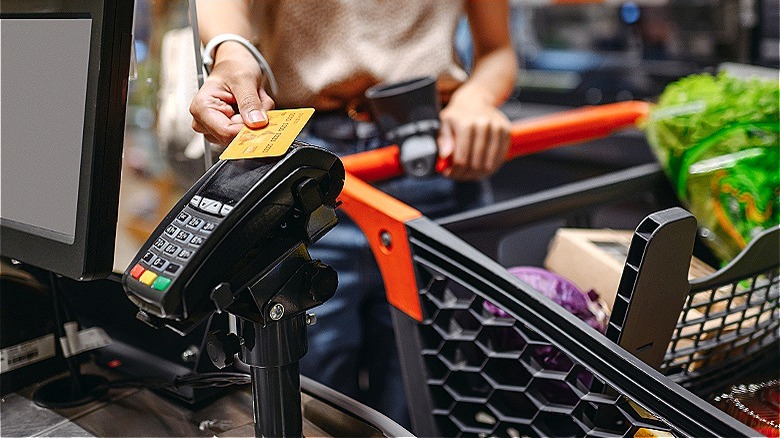How To Find An ATM That Won't Charge A Withdrawal Fee
With the ever-increasing popularity of credit cards and electronic payments, good ol' cash isn't as common as it once was. Still, Alliant Credit Union reports that Americans continue to use cash for smaller purchases, like coffee; to pay for grooming services; and for person-to-person transactions, like a small loan between friends or to pay someone back for lunch. This said, if you aren't careful, that next trip to the ATM to grab some convenient cash could cost you a lot more than you think.
There are actually two different types of potential ATM fees to be aware of: surcharges, which are implemented by the ATM's owner, and fees charged by your own bank or credit union for using an out-of-network ATM. Per a 2023 Bankrate study on checking accounts and ATM fees, the average ATM surcharge is $3.15, while the average out-of-network fee is $1.58. Combined, that's $4.73 — nearly five bucks —just to access your own hard-earned greenbacks.
If you withdraw money in this fashion once per week, the applicable fees could add up to almost $250. Fortunately, there are a few smart ways to avoid paying those pesky charges.
Find an ATM with a relationship to your bank
Your first line of defense against fees is to use an ATM that's owned by your bank or credit union. Typically, those machines won't charge any fees whatsoever to current account holders. Nearly all financial institutions list their ATM locations on both their websites and mobile apps, but what if there are none nearby?
If you can't find a convenient ATM that's owned by your bank or credit union, the next best thing is to locate one that's in the same network as your financial institution. Some popular network names that partner with banks include Allpoint and MoneyPass, plus CO-OP Financial Services for credit unions. To find out which surcharge-free network your bank is affiliated with, you can search its app or website, inquire with the bank directly, or examine your debit card itself for a network's logo.
Finally, certain institutions offer premium checking or savings accounts that let members use any ATM for free. Any fees or surcharges for out-of-network ATMs are waived or otherwise refunded, either on an unlimited basis or up to a certain amount each month. Be aware that these feature-rich accounts typically require paying a monthly service fee, maintaining a large minimum balance, or directly depositing your paychecks — or a combination of those things.
Get your groceries and cash at the same time
If you only need a relatively small amount of cash, you might be able to ditch the ATM altogether. Many grocery stores and a fair number of retailers will allow you to get cash back when paying for your purchase with a debit card.
For example, if you're buying $30 worth of groceries and want to withdraw $40 more in cash, the supermarket's payment terminal will simply charge your debit card $70 and dispense the $40 with no fees whatsoever. Do note that withdrawal limits are typically lower in these types of situations than at an ATM. The maximum withdrawal amount can range from $10 at 7-Eleven up to $300 at Kroger grocery stores, but most retailers hover around a $100 maximum.
A final word of advice is that if you're regularly withdrawing cash from an ATM that charges a fee and the situation can't be easily avoided, be sure to withdraw a sizable amount of money each time. For example, paying a $5 fee to withdraw $20 represents a whopping 25% fee. Paying that same $5 fee to withdraw $200 is only 2.5%. ATM withdrawal limits vary by bank and individual ATM, but you typically can't withdraw $500 to $1,000 per day.


